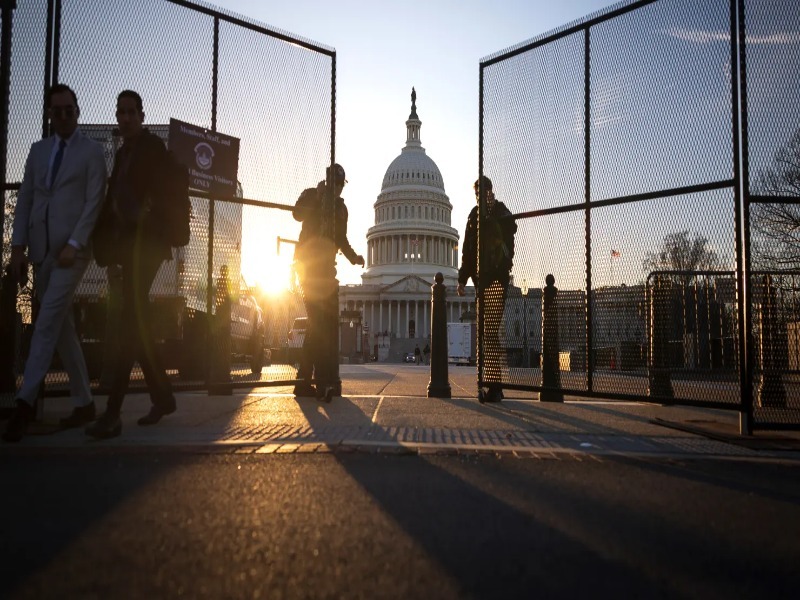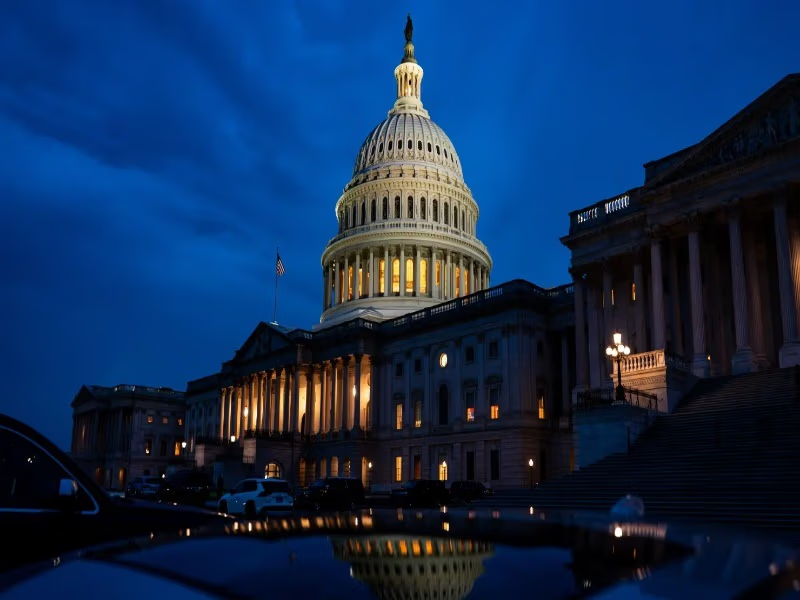The U.S. government shut down its operations for the first time in six years on Wednesday because the Senate was not able to pass a funding bill, plunging the country into a serious crisis. In addition, the situation was worsened because President Donald Trump threatened to lay off more federal employees. At 12:01 a.m. on Wednesday, the shutdown clock expired.
Who will be affected by the U.S. government shutdown?
The 15th government shutdown since 1981 will not only put a stop to some services, such as the closely anticipated September employment report, stifle air travel, put a halt to scientific research, withhold pay to American troops, and furlough 750,000 federal employees, costing the government $400 million a day. The U.S. federal government shutdown implies that all non-essential government functions are frozen. And this will have an impact on social security, on-air travel, and access to national parks. The approval of the funding by Congress is required to enable the president to sign the budget legislation for the upcoming fiscal year of the federal agencies. In the event of the shutdown, when they cannot give the go-ahead with funding, those agencies are also reportedly closed down, which means the employees are unable to attend work and are not paid.
Why is it shut down?
However, since there has been a lapse in funding now, the law mandates the agencies to furlough their “non-excepted” employees. Excepted employees, employees who work to secure life and property, do not receive payment but remain at work until the shutdown is lifted. The process is initiated by the White House Office of Management and Budget by giving instructions to the agencies that there has been a lapse in appropriations and that they should promptly commence orderly shutdown operations. That memo was put out on Tuesday night.
According to the Congressional Budget Office, the number of federal workers that might be furloughed daily is approximately 7,50,0000, and the overall cost of their compensation is about USD 400 million per day.
What does the government do throughout the shutdown?
The FBI investigators, CIA officers, air traffic controllers, and agents manning checkpoints at airports continue to work, and so do members of the Armed Forces. Programmes based on compulsory expenditure are usually sustained even during a shutdown; therefore, social Security checks continue to be paid out. Senior citizens who are covered by Medicare can still have access to their doctors, and health care providers can be reimbursed.
Veteran health care also proceeds in the case of a shutdown. Veterans Affairs medical facilities and outpatient clinics will be operational, and VA benefits will still be taken and rendered out. Significantly, burials will proceed at VA national cemeteries.

Democrats are insisting on health care
Democratic Senate Democratic Leader Chuck Schumer claimed that Republicans are trying to “bully” the Democrats by not compromising on an extension of the expanded Affordable Care Act tax credits that are about to expire at the end of the year. “We hope they sit down with us and talk. Otherwise, the Republicans will be driving us straight towards a shutdown tonight at midnight. The American people will blame them for bringing the federal government to a halt,” Schumer added after the vote.
Failure to ensure that the government remains open implies that hundreds of thousands of federal workers may be laid off or furloughed. The Office of Management and Budget of the white house ordered agencies to execute their plans for an orderly shutdown.
Trump is threatening sanctions
President Trump threatened to shut down may involve “cutting vast numbers of people out, cutting things that they like, cutting programs that they like.” The Republicans insisted that they are not going to modify the legislation, terming it a gutted-down, “clean” bill.
John Thune, Senate Majority Leader, said, “We can reopen it tomorrow” as long as enough democrats will cross party lines. The most recent government shutdown was witnessed under the first term of Trump from December 2018 to January 2019.
Trump, at the time, insisted on financing a U.S.-Mexico border wall. The 35-day shutdown was the most protracted in history, leaving federal employees and airport operations in great disarray.
Washington partisan stalemate
The stalemate now is an opportunity where Democrats view a chance to use their position to realize their policy agenda. The Republican majority in the Senate is 53-47, which implies that there were at least eight Democratic votes to pass the bill. The GOP seeks to halt the bill, but Republican Senator Rand Paul came up against it, making it hard.
Democratic Senators John Fetterman, Catherine Cortez Masto, and Independent Senator Angus King cast their votes with Republicans to ensure that the government operates with the hope that more Democrats will ultimately vote in favor of the bill. Following the decision, King was worried about “permanent damage” due to possible mass layoffs.
King states, “Instead of fighting Trump, we are actually empowering him, which is what finally drove my decision. Thune predicted that Democratic support will grow “when they realise that this is playing a losing hand.”
Preparations for the shutdown
Federal agencies are already planning the shutdown; the White House has asked agencies to reflect on the possibility of “a reduction in force” program, and this would lead to the fact that some of the workers would be fired instead of being furloughed.
The Congressional Budget Office estimates that approximately 750,000 federal employees may be put on furlough each day in the event of a shutdown. On the Housing and Urban Development homepage, there was a warning that read as follows, “The Radical Left are going to shut down the government and inflict massive pain on the American people.”
The stakes are high because the government is preparing to take the hit of the shutdown on programs, federal employees, and citizens.






